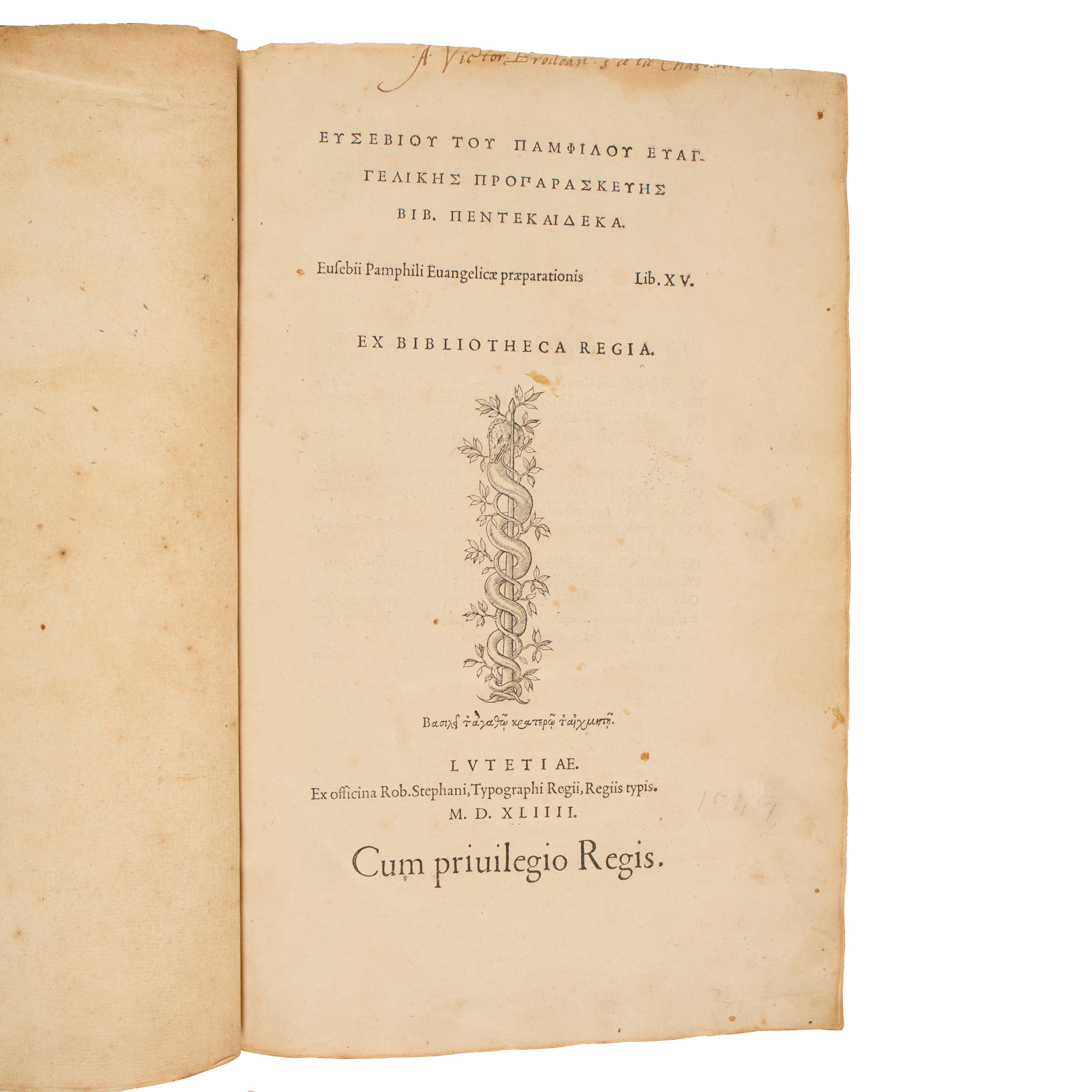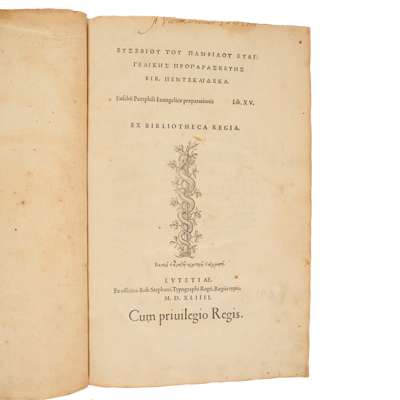
Lot 273

Eusebius of Caesarea
Evangelicae praeparationis lib. XV [bound with:] Evangelicae demonstrationis lib. X


Auction: 18 June 2025 from 10:00 BST
Description
[Greek titles at head:] Eusebiou tou Pamphilou Evangelikes Proparaskeves bib. pentekaideka [and:] Eusebiou tou Pamfilou Evangelikes Apodeixeos biblia deka. Paris: ex officina Rob. Stephani, 1544-5 [colophon of second work dated 1546]. 2 volumes in 1, folio (32.5 x 20.5cm), A-2S6 2T4, 2A-3C6 3D4, old mottled calf, rebacked with inner hinges reinforced, Greek-key roll gilt to sides, woodcut Estienne device to each title-page, main text of each work entirely in Greek, large foliate woodcut initials, each volume retaining terminal errata leaf (2T4 and 3D4 respectively), light marginal spotting, first volume title-page slightly soiled and with partially effaced pencilled date, fore margins with variable damp-staining and occasional manuscript crosses, second work with a few old stains to 2L6 and 2M1 costing a few letters either side in 2L6, closed tears to head of front free endpaper and initial blank [Adams E1087 & E1082; Renouard, Annales de l'imprimerie des Estienne 59.12]
Footnote
Editiones principes (first editions in the original Greek), a notable association copy, inscribed in a humanist hand at the head of the title-page of Evangelicae praeparationis ‘A Victor Brodeau S. de la Chas[…]' (the inscription partly shaved): this appears to be Victor Brodeau (c.1502-1540), seigneur de la Chassetière, French Renaissance poet and secrétaire and valet de chambre to François I, the patron of Robert Estienne, printer of the work; a later owner, to judge from the inscription ‘Ex Bibliotheca F. Oberthür’ to the front pastedown, was Franz Oberthür (1745-1831), Roman Catholic theologian at the University of Würzburg and editor of an edition of Josephus. ‘These volumes, first editions of the works which they contain, are also the first to use the Greek types of Garamond, cut on the orders of François I … In this beautiful edition, Robert [Estienne] gives proof of his typographical skill and of his deep knowledge of scholarly literature. Previously the only Greek works he had printed were two alphabets … and short Greek passages in a few Latin books, but from the moment when royal generosity put at his disposal the most beautiful Greek types ever made, he devoted himself to printing works in this language’ (Renouard).

